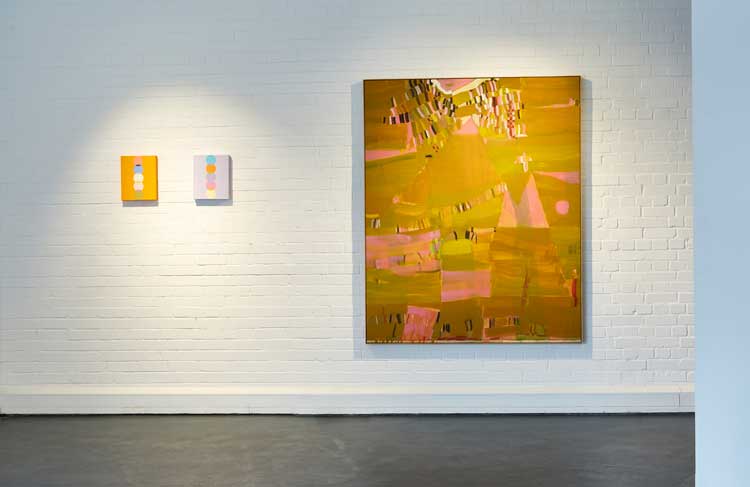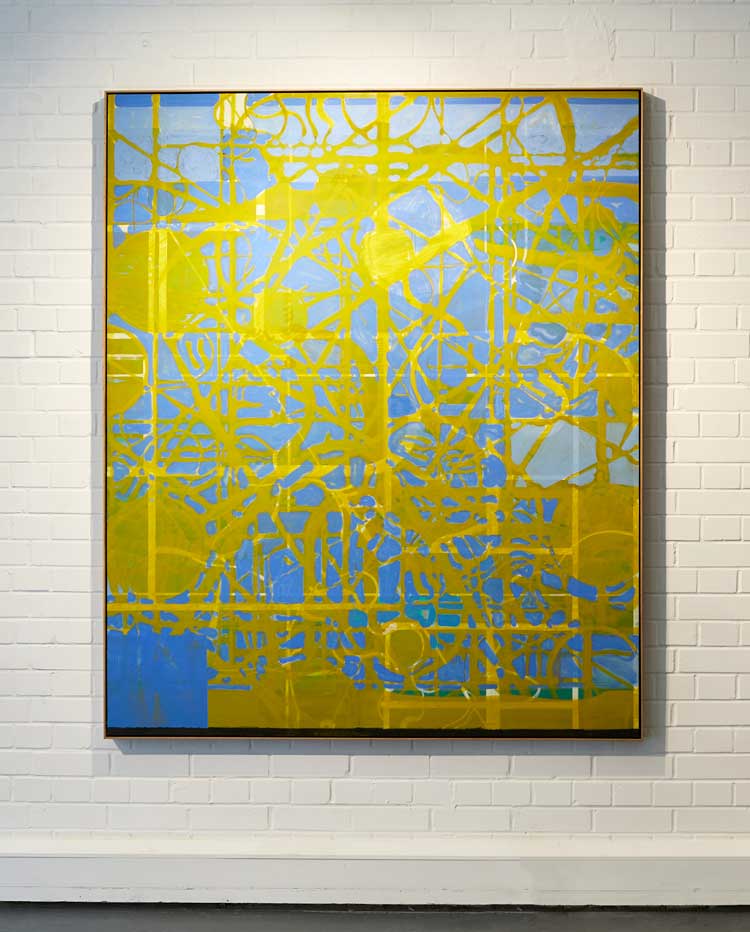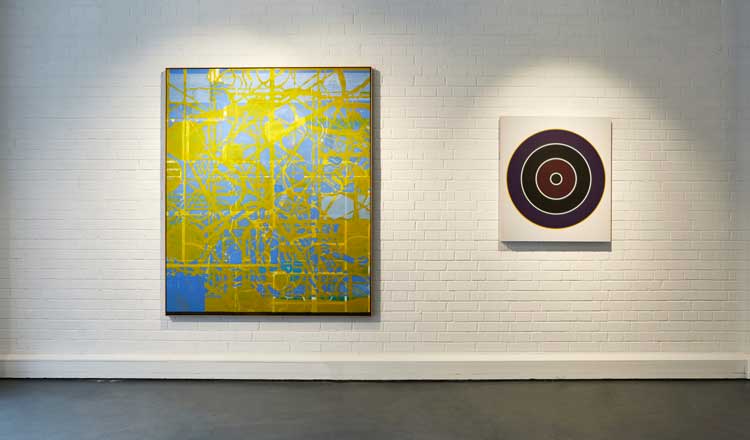

The Koppel Project, London
11 March – 29 April 2022
by CHRISTIANA SPENS
Featuring eight emerging contemporary artists, Judith Burrows, Matthew Burrows, Clare Chapman, Alison Goodyear, Libby Heaney, Suzanne O’Haire, Carol Robertson and Perdita Sinclair (who also co-curates the exhibition with Anna McNay), Things Will Continue to Change … is a record of a tumultuous and life-altering time for these individuals as well as us all. Inspired by David Shrigley’s work Things will Continue to Change, this group exhibition is a communal reflection on how much has been transformed by the emergence of Covid-19 and the start of the global pandemic two years ago, in March 2020, and how much continues to shift and alter in the wake of it.
[image8]
In particular, the exhibition explores the darker meaning of the government-backed advertising campaigns during this period, which suggested those working in the arts consider retraining – from a dancer to a police officer, or an artist to an electrician, for instance – and which appeared to come from the UK chancellor, Rishi Sunak. Working in the arts seemed to be seen as a luxury, rather than as a sustainable career or valuable asset to society that should be paid for. Yet, although there was so much turmoil and destabilisation, at every level of society, it was often art and culture that saved people during this time. This exhibition is evidence of the fact that art during the past two years especially, though it has been difficult to produce and extremely precarious as a career, has been a life raft for many.
[image5]
The artists featured in Things Will Continue to Change … showcase painting, sculpture, and digital media installations, all engaging with this recent communal trauma and, in particular, the experience of precariousness.
[image10]
Robertson shows five works, including Inner Space of Solitude (2021), a mesmerising abstract piece that resembles a dartboard, mostly black, with white circles and a yellow perimeter, capturing a feeling of vertigo or spiralling. In Solo in Pink (2021), she shows a similar circular work, though in red, black and pale pink, which reminded me of the plughole in a sink, or an eye – and which also captures a sense of sinking or spiralling into a singular, unknown space.
[image3]
In her three small Eclipses paintings (2022), overlapping neon or pastel shades form a column in each work, presenting a more upbeat vision, and showing these shapes as they eclipse one another and so create new tones where they overlap.
[image7]
In O’Haire’s Tragicomic Triggers 4 (2021), the artist presents five silver metal boxes, each containing different metallic shapes and compositions, almost like lunch trays or washing racks, but featuring found objects in a variety of textures and shades. Matthew Burrows’ painting Gatescape (2021) – a large-scale abstract piece featuring a complex, chaotic and yet balanced pattern in yellow over shades of blue – looks at once like paint splattered across the floor, and the map of a grid-like city plan.
[image2]
There is also an impressive digital work, or “slow painting film work” by Goodyear, which is over three hours long. Even a short immersion in the work proves fascinating, though, as splashes of paint and abstract arrangements float around one another in free form, creating a living painting that transforms as you sit with it.
[image6]
Also exploring the promise of the digital realm of fine art, Heaney shows Teletities (Study of Quantum Entangled Relations Between Images), using quantum computing to entangle and merge three open-source images that she found on Wikipedia, suggesting new interconnected ways of understanding and representing change and turbulence. Heaney says: “Through almost imperceptible change, Teletities aims to disrupt the accelerating binary logic of our current internet and digital imagery, proposing instead an alternative queer way of seeing. Individual images – the Earth, a cephalopod and plants – slowly lose their identity and merge together, creating hybrid patterns and relations that could only be generated through quantum data.” This idea – and visual manifestation – of change and the destruction and reconstruction of visual identity is especially fascinating as a metaphor for the wider identity shifts individuals have been through over the past two chaotic years, and a reminder of the eventual reconstitution and new identities formed even in the midst of chaos.
Alongside these central works, QR codes in the gallery link to creative responses by key stage 4 pupils from Addey and Stanhope secondary school in Lewisham, south-east London. To underline the idea of change as a constant, moreover, there will also be a rehang halfway through the exhibition’s residency, showing a new variety of works by the same eight artists. The youth and the artists lead the way here, then, as in society more generally, in showing the fast and unpredictable pace of change with which we all must grapple, whether feeling isolated or together or, as in the past few years, together in isolation. Things Will Continue to Change … is a brilliantly curated and insightful record of a turbulent time that ultimately underlines the communal aspect of a shared trauma and the loneliness often inherent in these experiences of illness, isolation, and the confusing behaviours and relationships that have manifested from this time.

.jpg)
.jpg)
.jpg)
.jpg)
.jpg)

.jpg)
.jpg)

